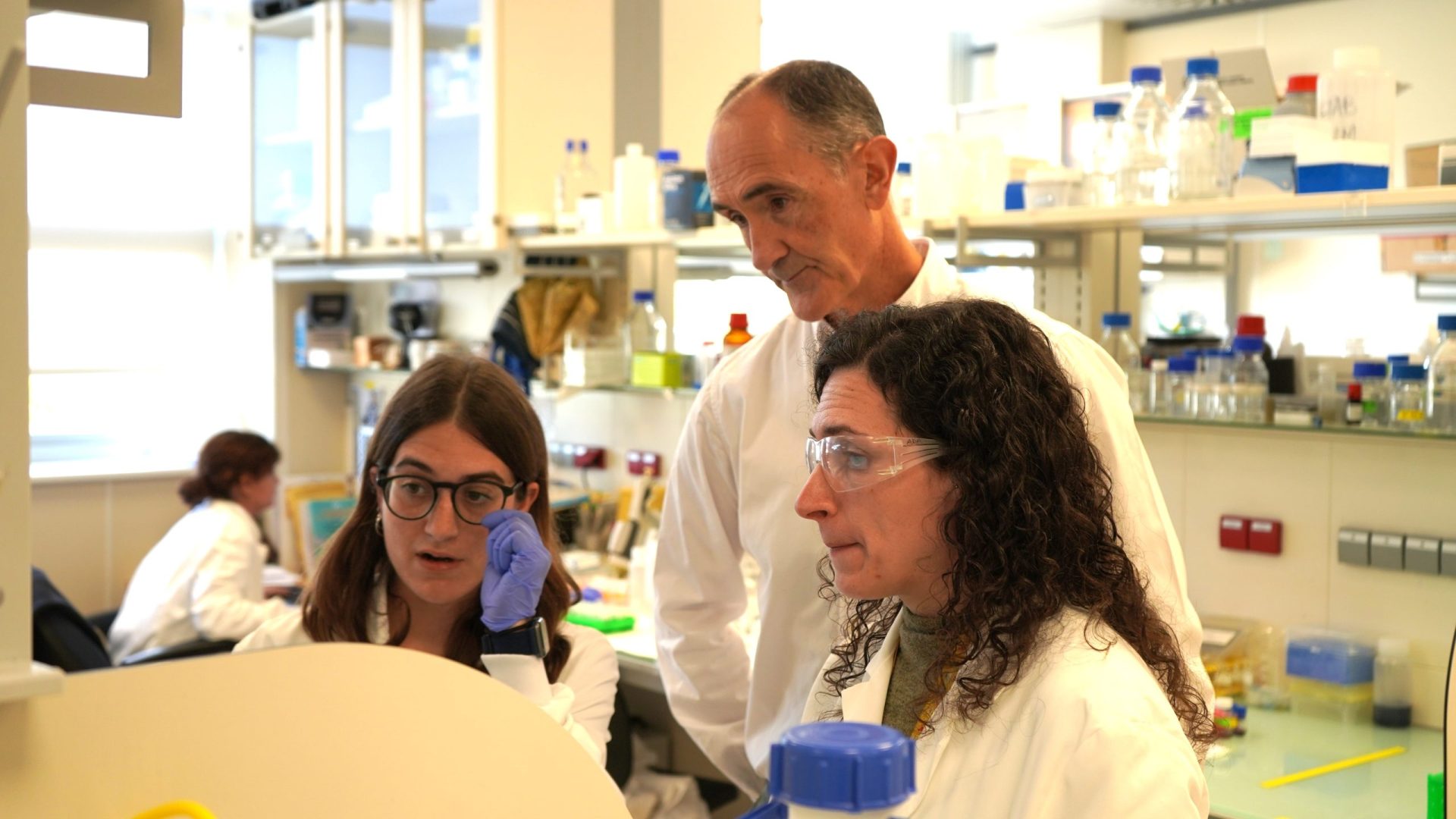9 million to develop nanoparticles that recognise proteins

The European Research Council (ERC) has awarded a Synergy Grant to CIC biomaGUNE Ikerbasque professor Luis Liz Marzán to design tailor-made nanoparticles.
The project consortium is formed by CIC biomaGUNE, the University of Vigo, the University of Antwerp and the University of Michigan.
The CHIRAL-PRO project coordinated by CIC biomaGUNE’s Ikerbasque professor Luis Liz Marzán has received one of the prestigious Synergy Grants from the European Research Council (ERC), which aim to fund very ambitious, high-risk research projects involving groups from different disciplines and different countries. The project, funded with 9,272,460 euros, will be carried out by the BioNanoPlasmonics group of CIC biomaGUNE and the Biomimetic Materials group of CINBIO (University of Vigo), both led by Professor Liz Marzán, the group of Professor Sara Bals of the University of Antwerp and the group of Professor Nicholas A. Kotov of the University of Michigan, with whom she has maintained a long-standing collaboration.
This project supports the wide international recognition of Luis Liz Marzán as a pioneer in nanoscience, especially in the synthesis and application of plasmonic nanoparticles. Prior to this ERC-SyG, Liz Marzán has won two consecutive ERC Advanced Grants and two Proof of Concept Grants, which represent almost continuous funding from the ERC for 20 years. ‘It is a recognition of the prestige of the research teams I have led at CIC biomaGUNE and the University of Vigo,’ says the professor, who is very happy to continue working with his partners in Antwerp and Michigan, ’with whom I have been collaborating for a long time and with whom we have the potential to obtain results with a very great scientific and social impact.
From intuition to prediction
Professor Liz Marzán has extensive experience in the synthesis of nanoparticles (with dimensions of millionths of a millimetre); ‘through chemical reactions we can control their geometries in great detail and we have been able to obtain various shapes and sizes. Although the mechanisms that cause a nanoparticle to grow as a sphere, elongated as a rod, or in the shape of a triangle have long been sought, although we know how to do this, knowledge of the mechanisms is still limited.
The main goal of CHIRAL-PRO will be to develop a methodology to design nanoparticles with a specifically defined geometry to selectively and robustly bind proteins and protein-formed fibres of nanometric dimensions. We hope to provide the scientific community with a tool to make nanoparticles on demand,’ says project coordinator Liz Marzán, ’and to be able to move from intuitive synthesis (as has been done so far) to predictive synthesis supported by artificial intelligence-based predictions. The project also seeks to demonstrate different applications of these new nanomaterials and their selective binding to proteins in fields such as biosensors, biomedicine and even telecommunications, since ‘it will be possible to obtain artificially manufactured materials with properties that we do not know today’.
Chiral nanoparticles with exceptional optical properties
The novelty of the project lies in the fact that ‘we are going to include a geometric property called chirality,’ explains the professor. This is the property of objects that cannot be superimposed with their mirror image. Let’s use the example of hands to explain this property: one hand is the mirror image of the other; but if you place one hand on top of the other (not in a palm-to-palm position, but overlapping), the fingers do not coincide. The same thing happens in many organic molecules and biomolecules. The structure of these molecules is the same, but they are rotated with respect to each other’. The importance of chirality can be explained by recalling the case of thalidomide (a drug prescribed in the middle of the last century to alleviate morning sickness): one of the chiral forms of thalidomide is beneficial, but the same structure turned the other way causes very serious damage to foetuses.
Chirality can be exploited to look for strong bonds between complementary objects (like a handshake). This concept has recently been taken to the nano-scale and nanomaterials with extraordinary properties are being obtained. ‘In this project we will use artificial intelligence techniques to predict and obtain strong and selective bonds between the chiral structure of our nanoparticles and the corresponding one in biomolecules. By using the special optical properties of these nanoparticles, we can achieve selective biodetection and more efficient device fabrication.
Video by Ikerbasque professor Luis Liz Marzán
Presentation of the project in images and animations: Presentation.pptx




